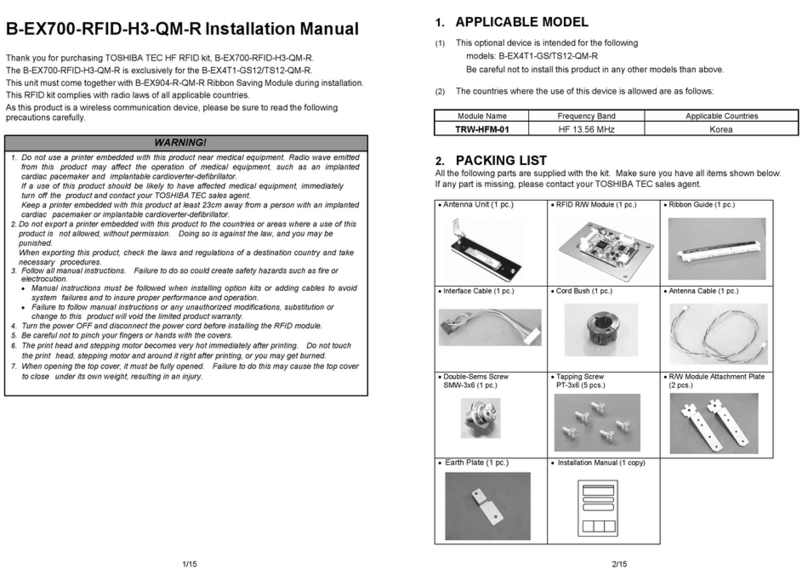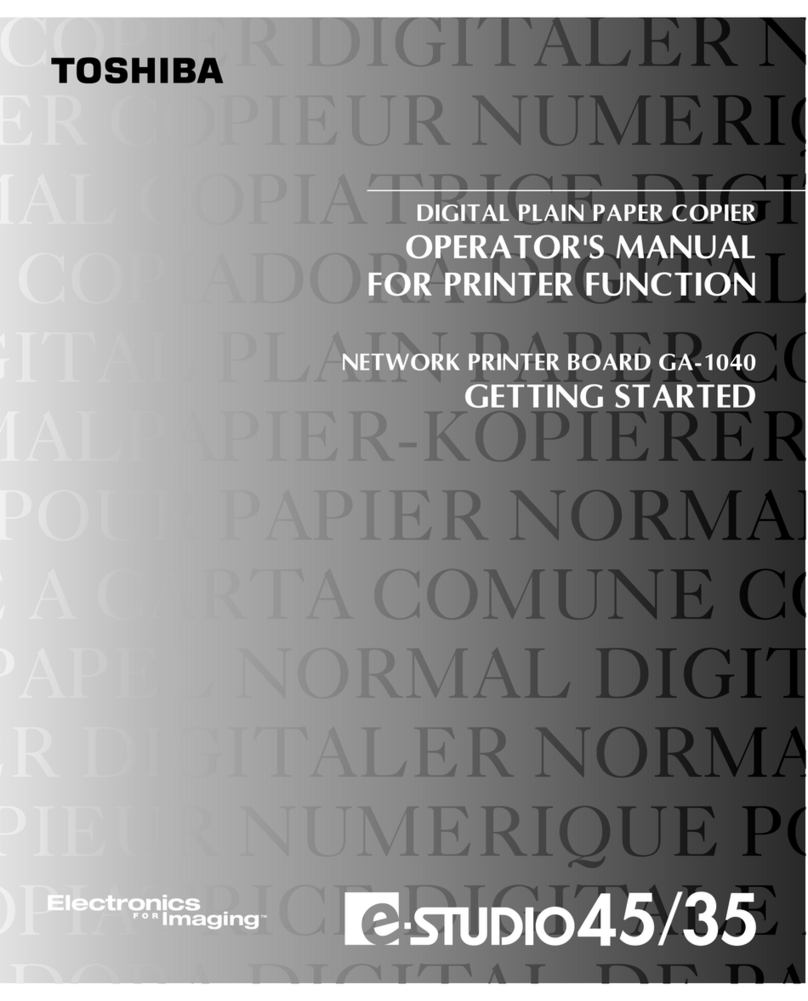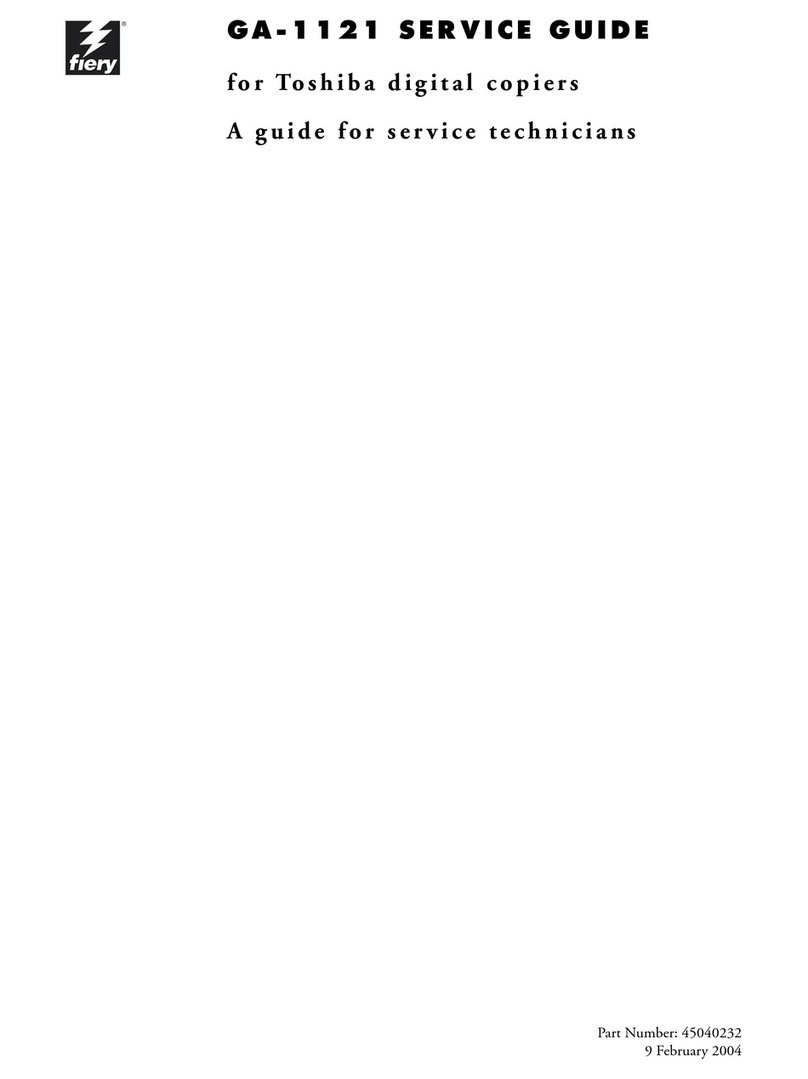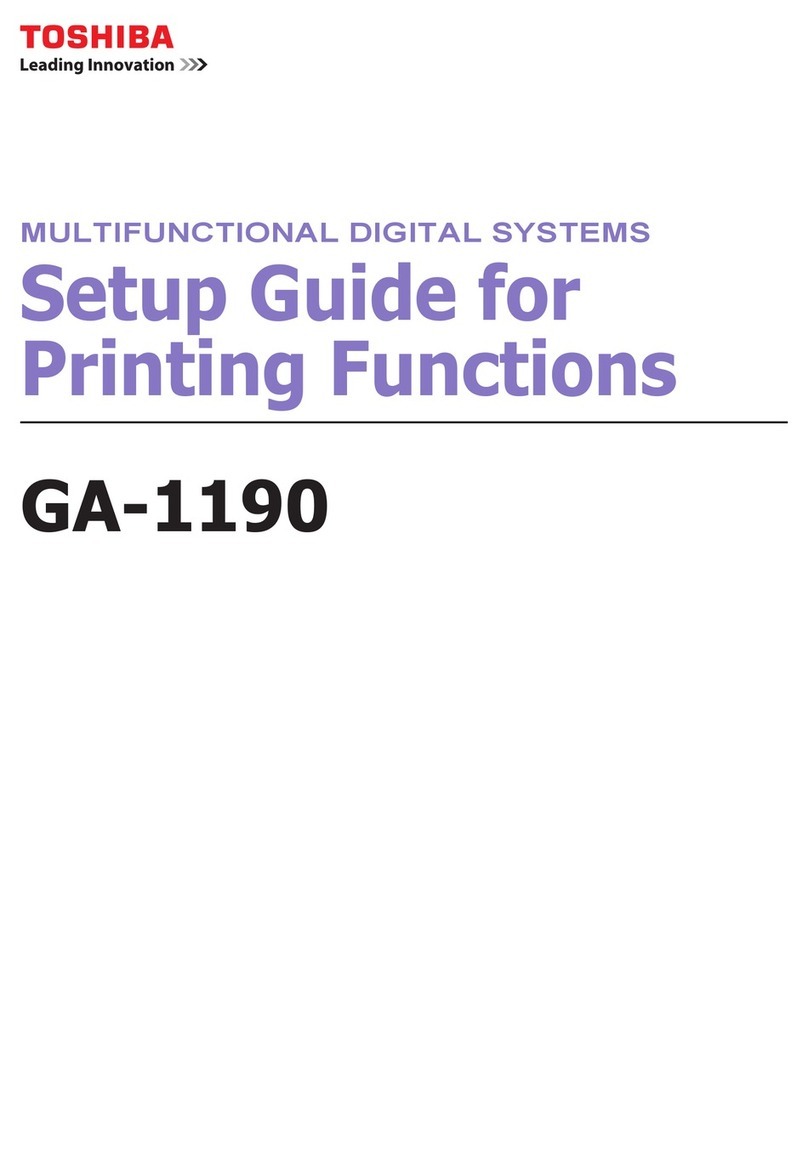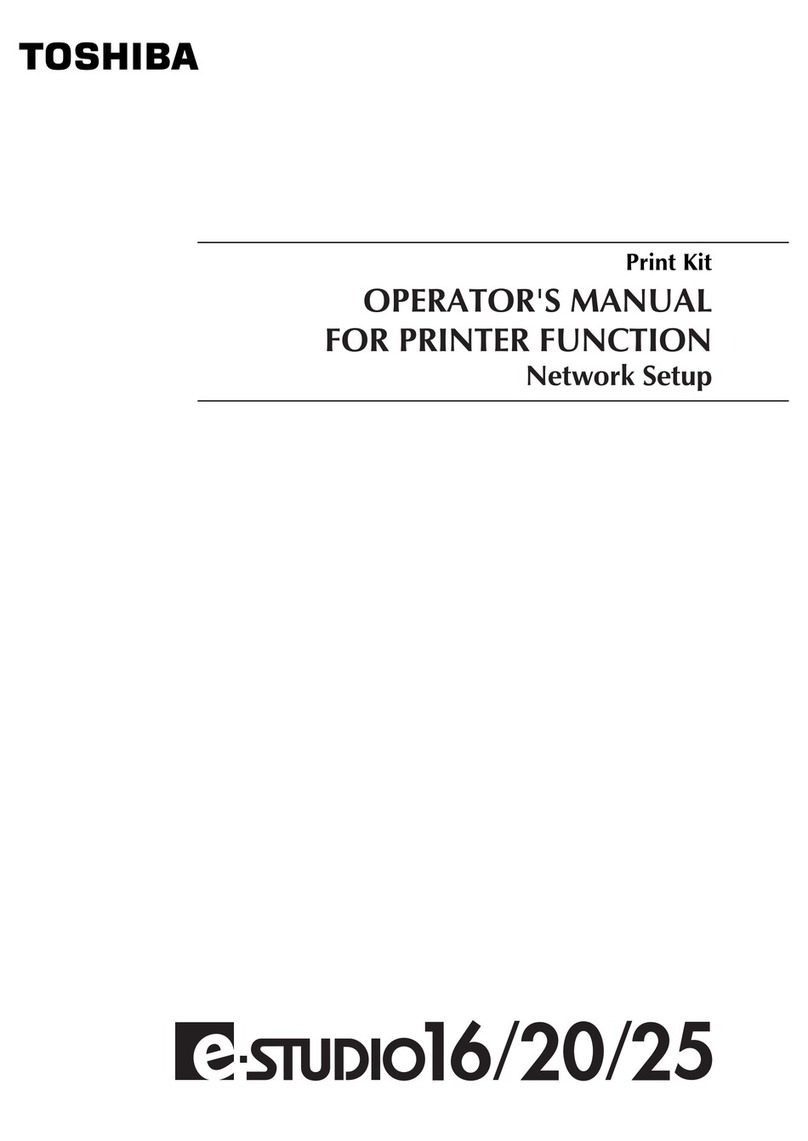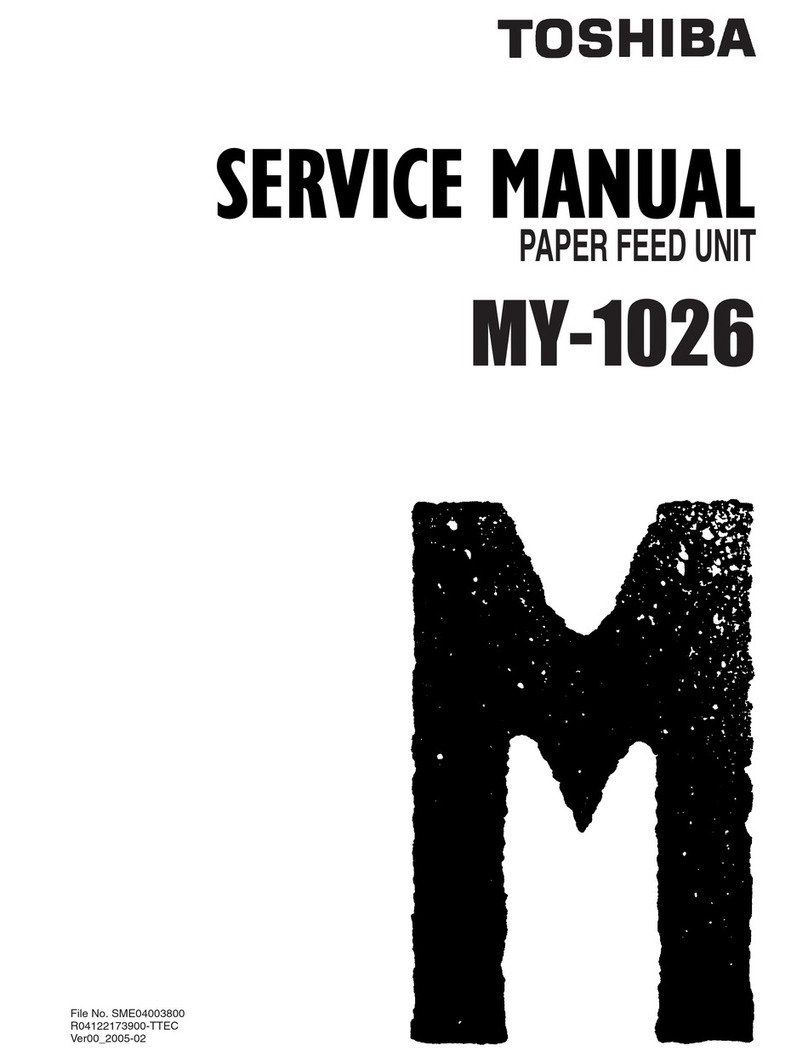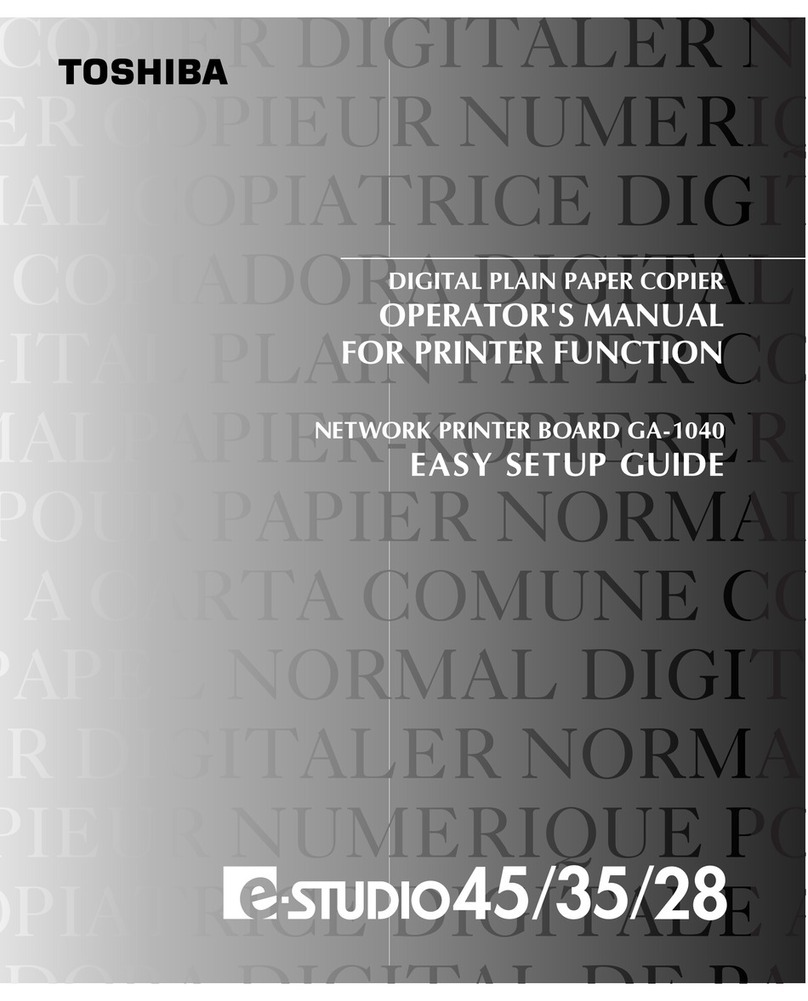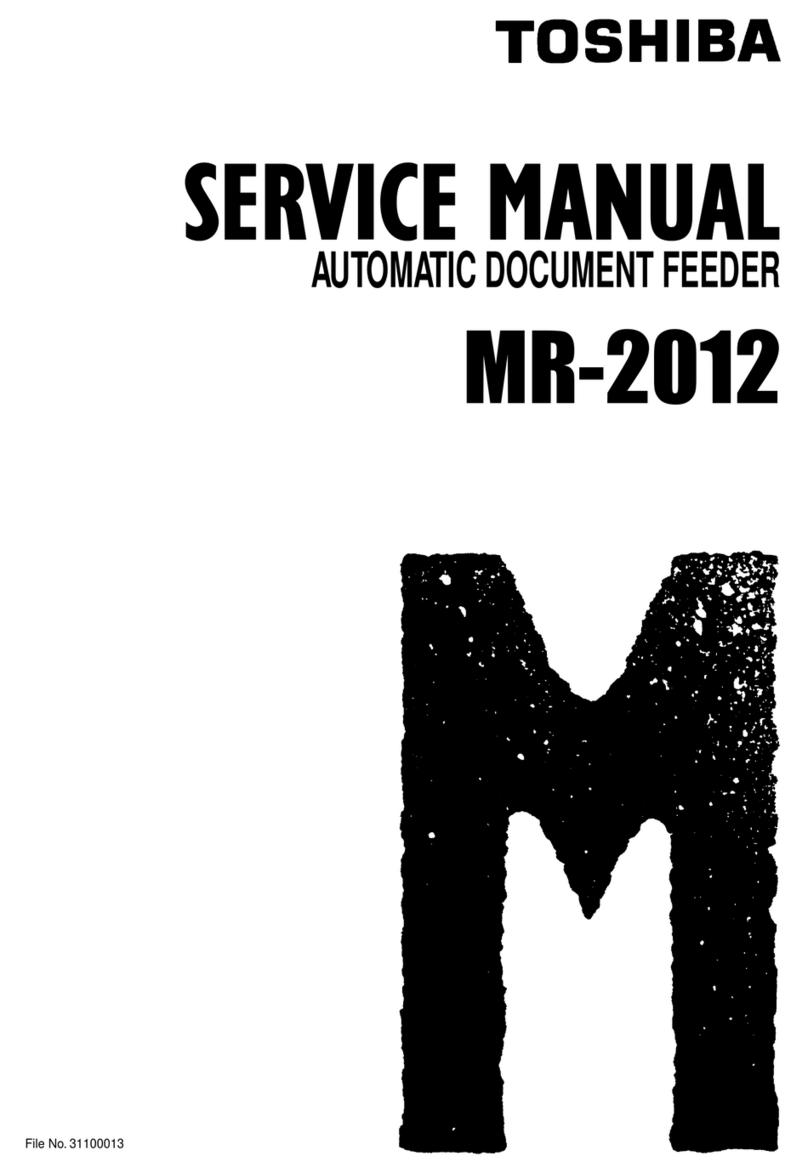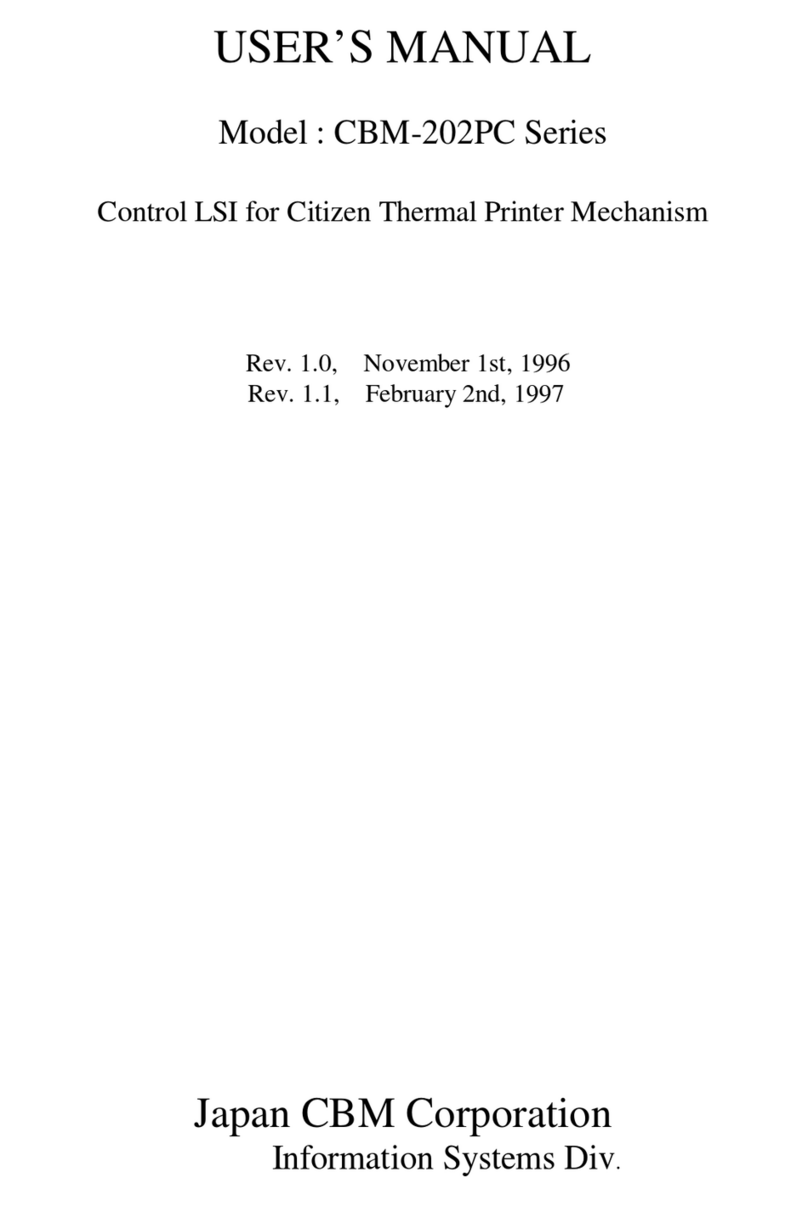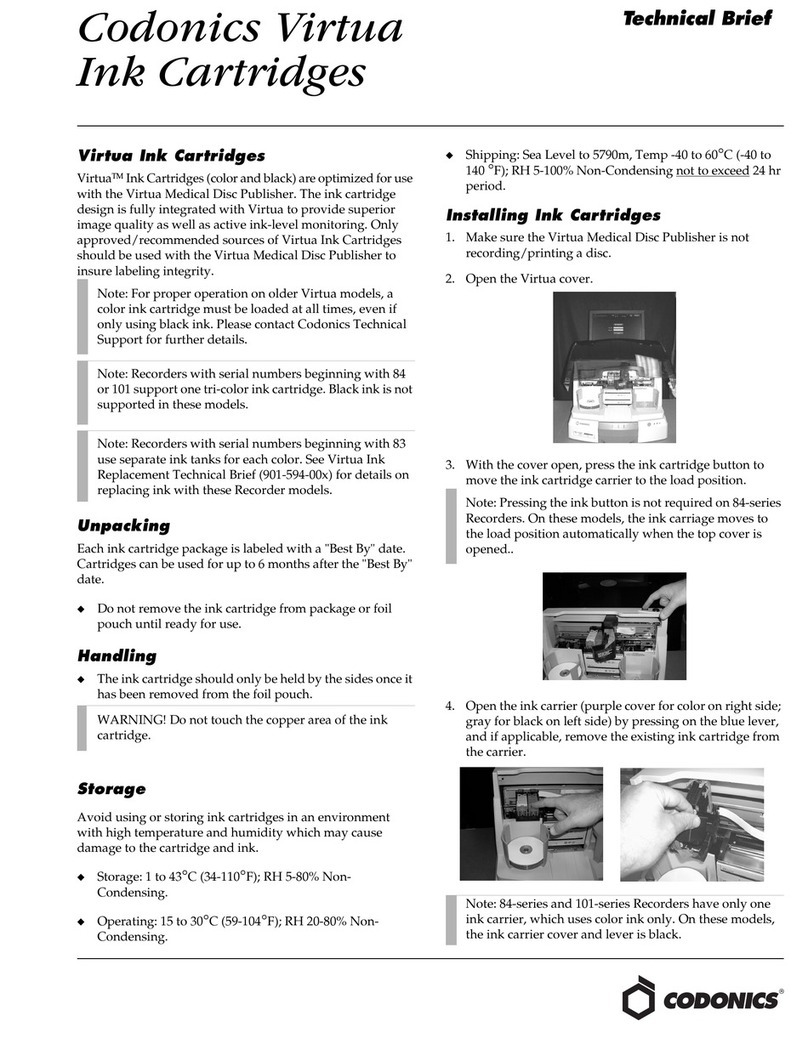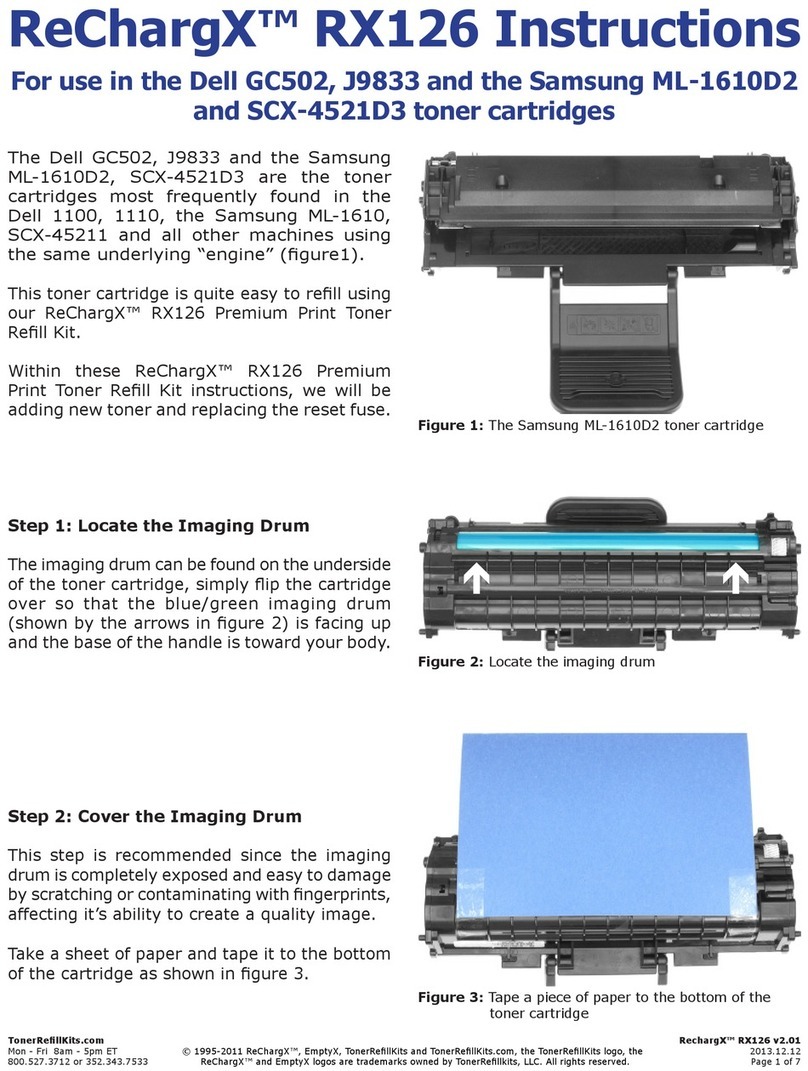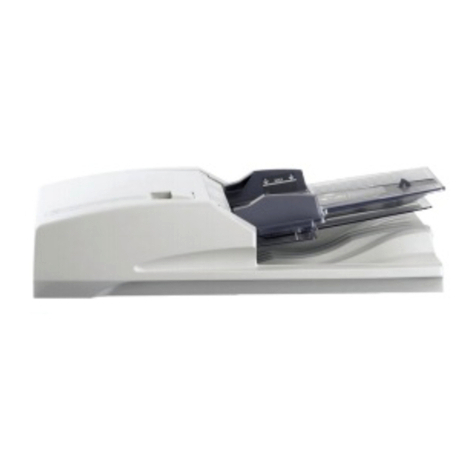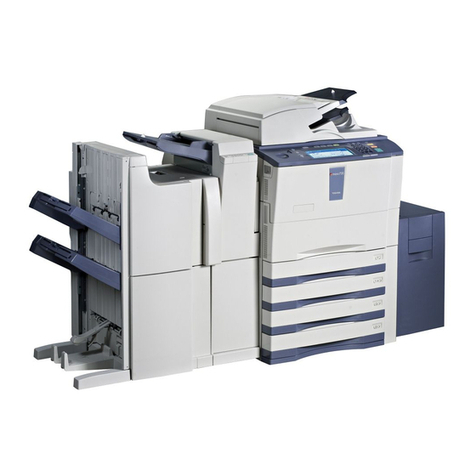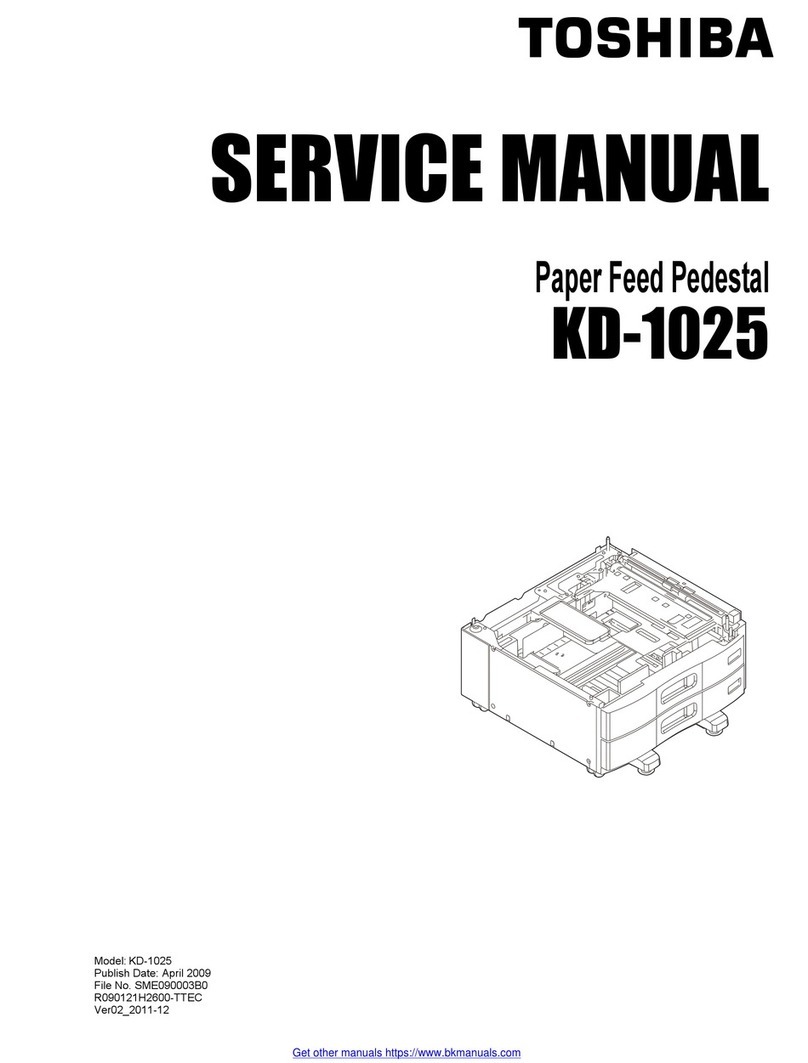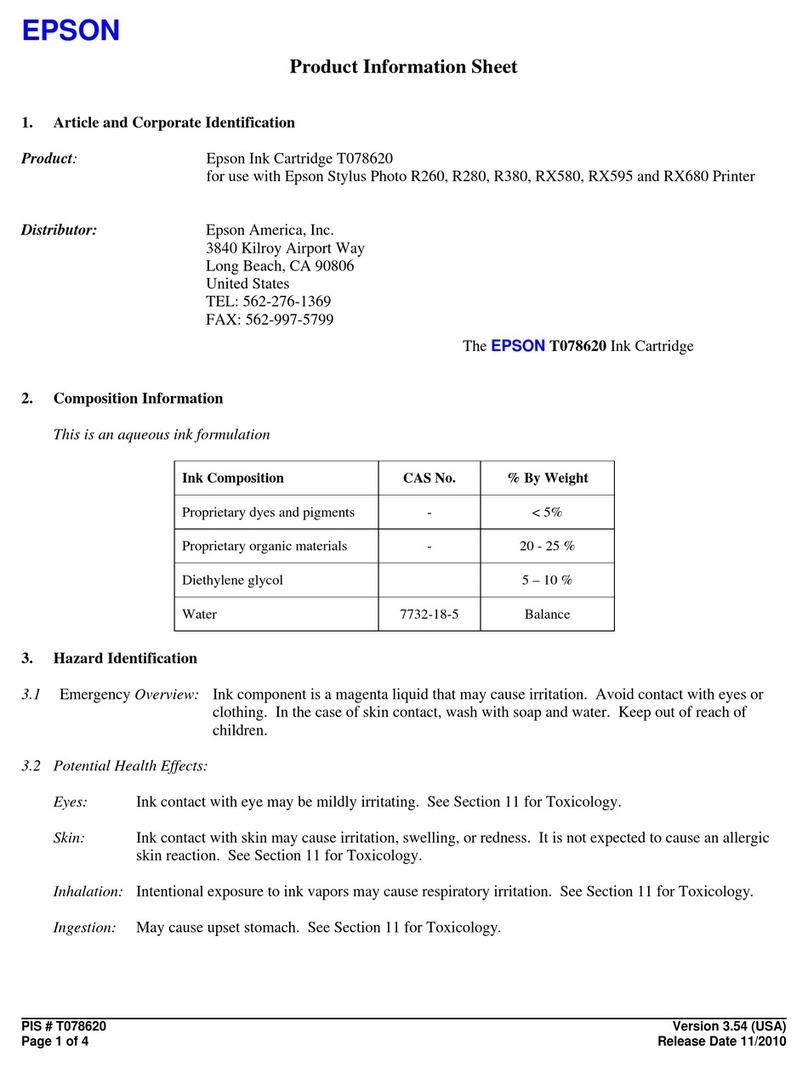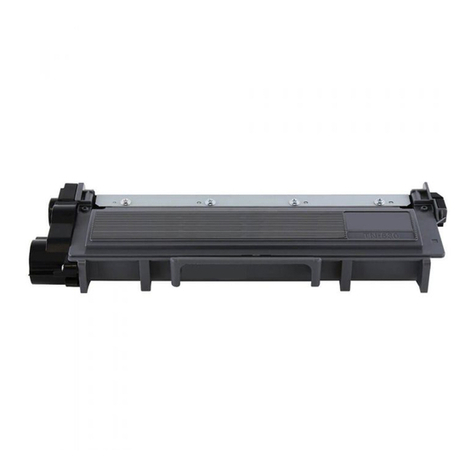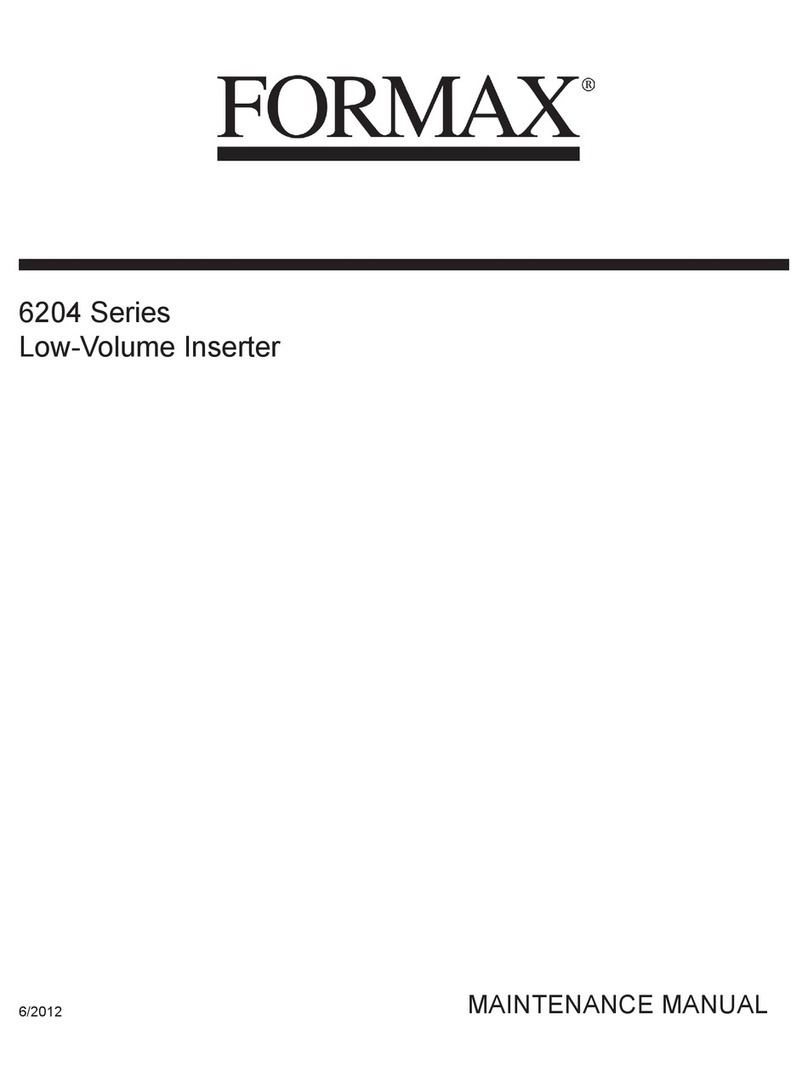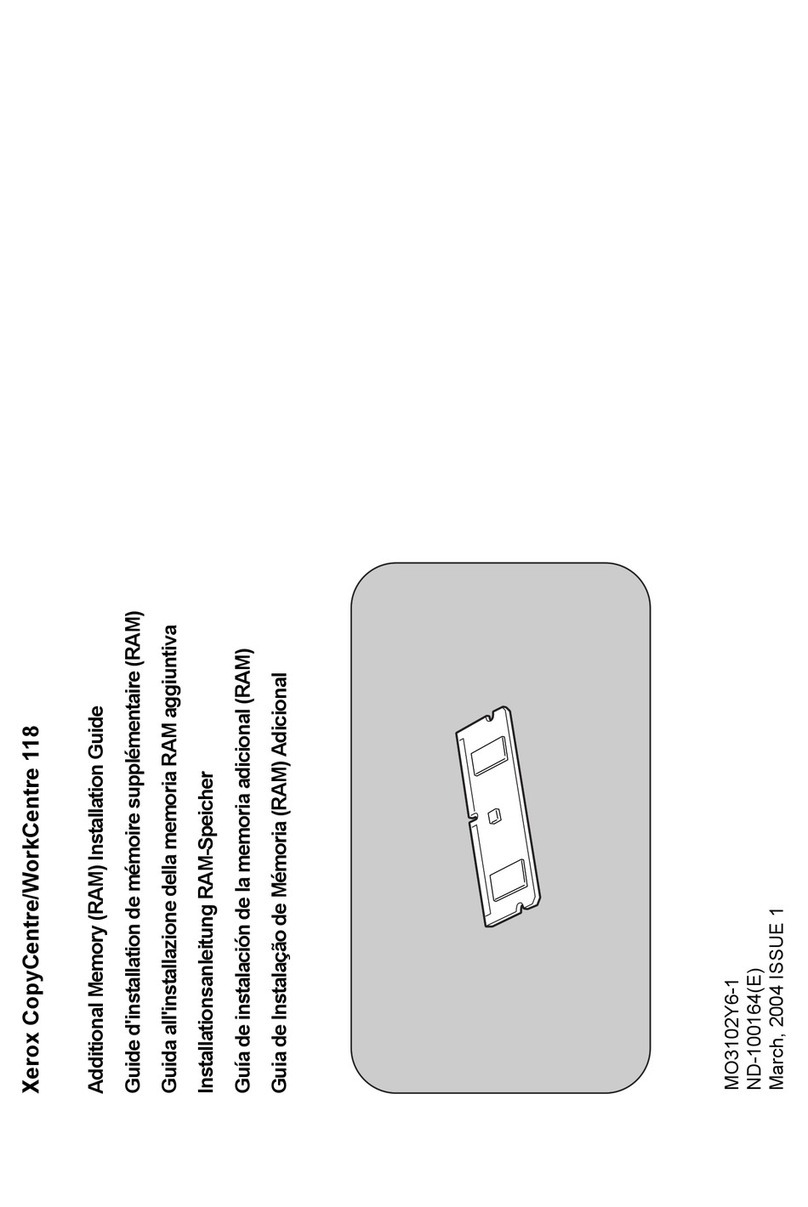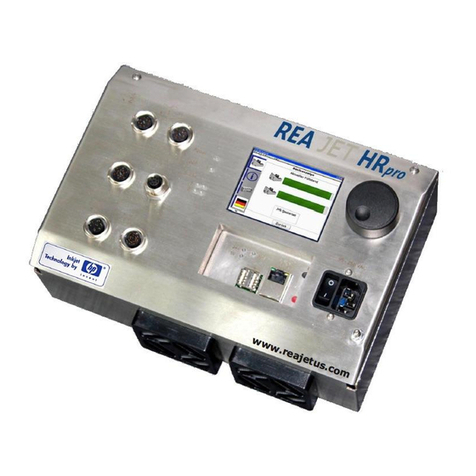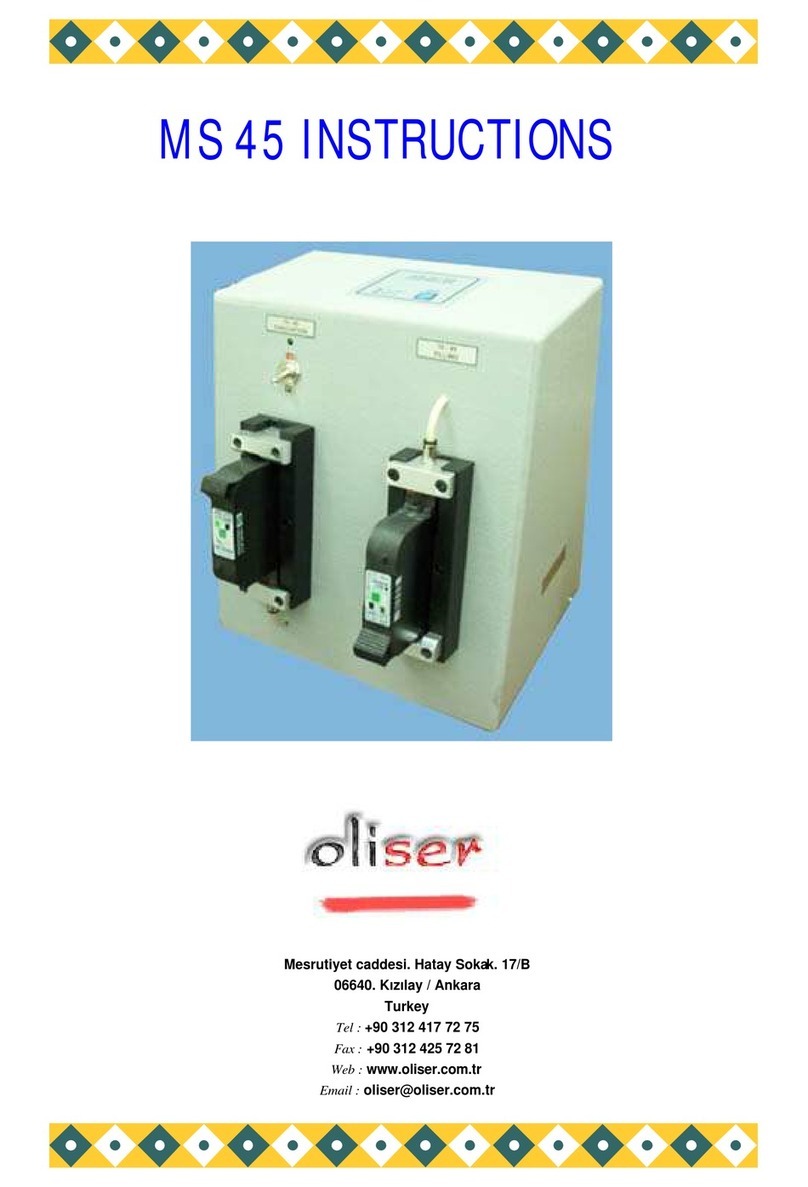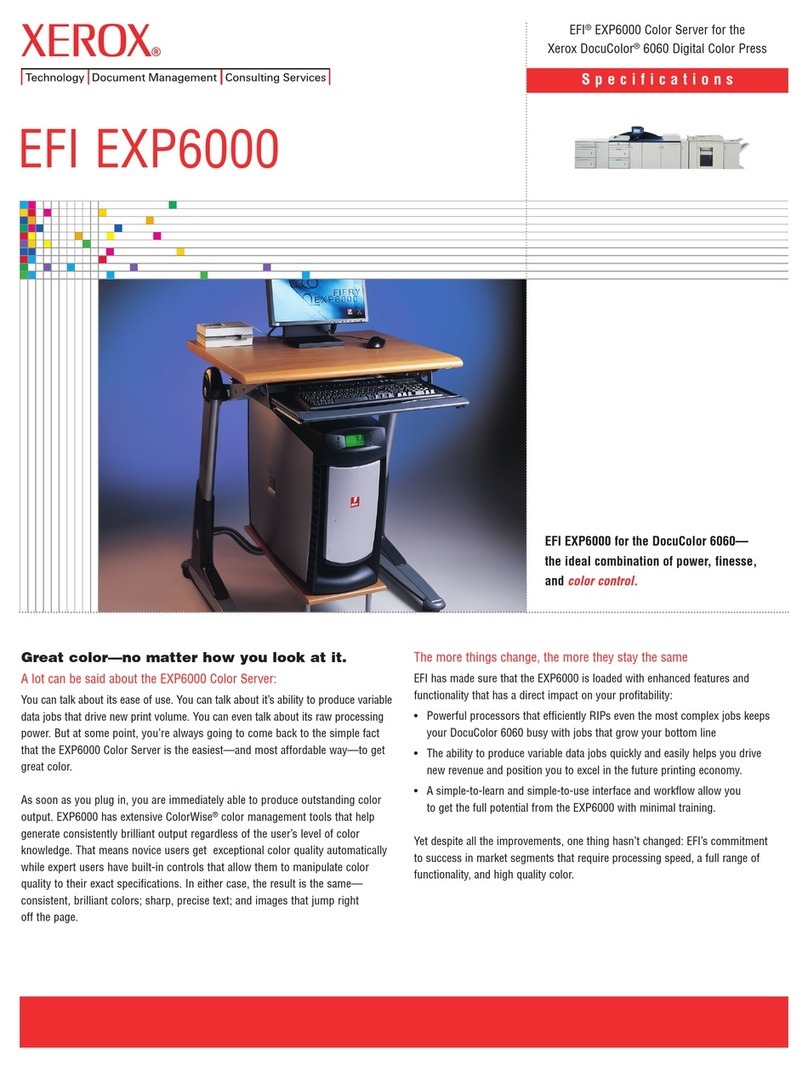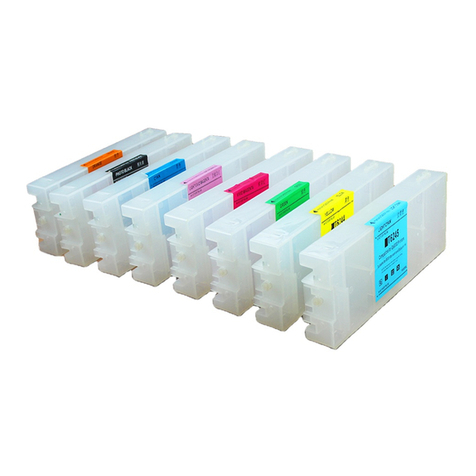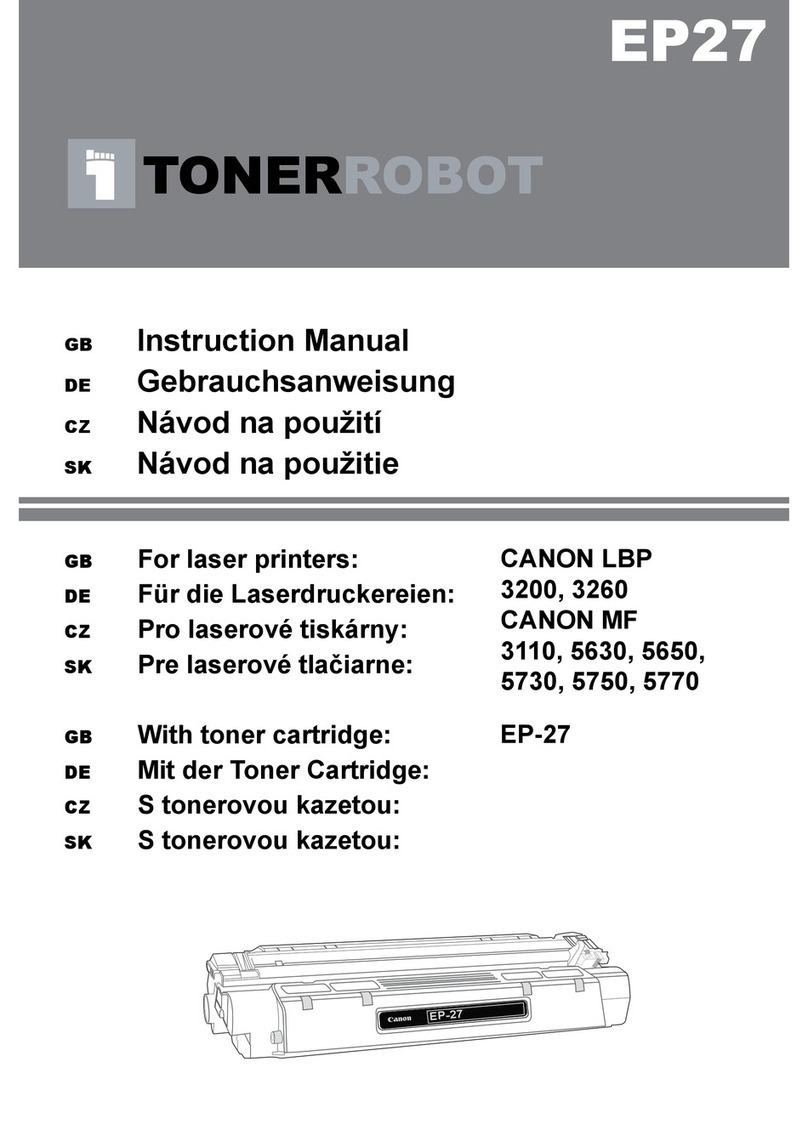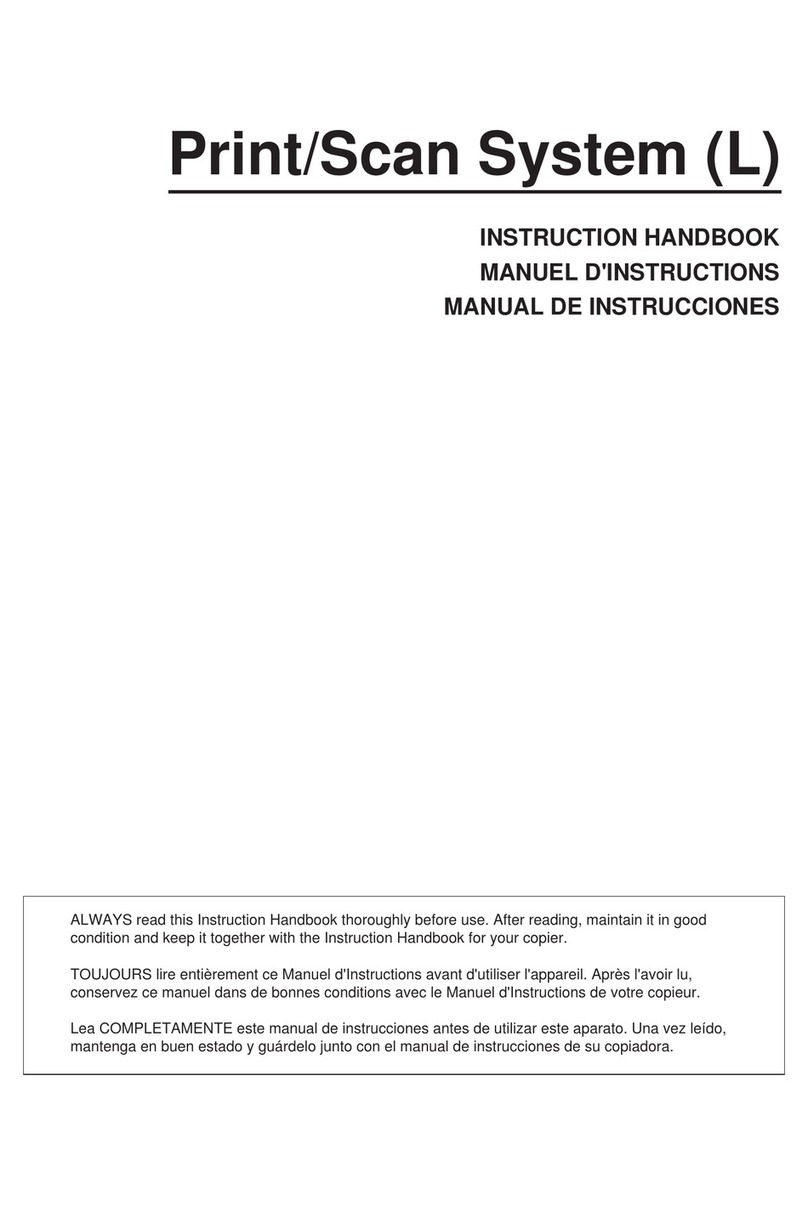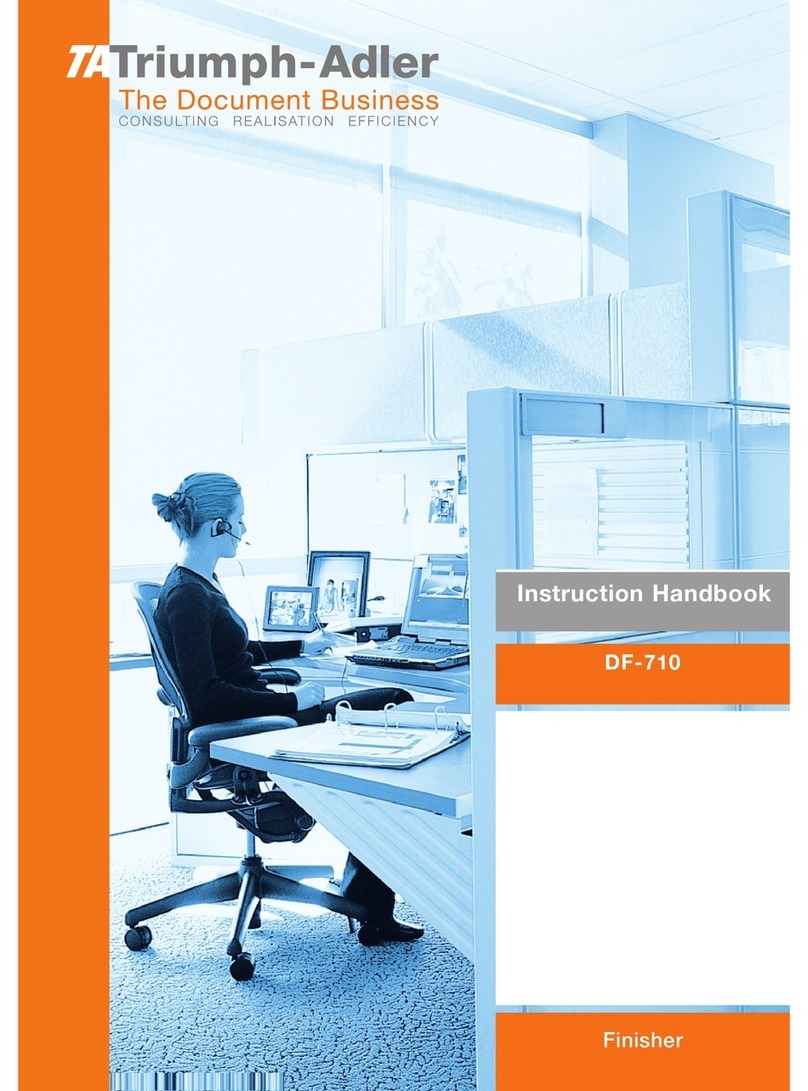
General Precautions for Installation/Servicing/Maintenance for the MY-1016
The installation and service should be done by a qualified service technician.
1. When installing the MY-1016 to the Plain Paper Copier, be sure to follow the instructions described in
the “Unpacking/Set-Up Procedure for the MY-1016” booklet which comes with each unit of the
MY-1016.
2. The MY-1016 should be installed by an authorized/qualified person.
3. Before starting installation, servicing or maintenance work, be sure to turn off and unplug the copier
first.
4. When servcing or maintaining the MY-1016, be careful about the rotating or operation sections such
as gear, pulleys, sprockets, cams, belts, etc.
5. When parts are disassembled, reassembly is basically the reverse of disassembly unless otherwise
noted in this manual or other related materials. Be careful not to reassemble small parts such as
screws, washers, pins, E-rings, toothed washers to the wrong places.
6. Basically, the machine should not be operated with any parts removed or disassembled.
7. Delicate parts for preventing safety hazard problems (such as breakers, thermofuses, fuses, door
switches, sensors, etc.if any) should be handled/installed/adjusted correctly.
8. Use suitable measuring instruments and tools.
9. During servicing or maintenance work, be sure to check the serial No. plate and other cautionary
labels (if any) to see if they are clean and firmly fixed.If not, take appropriate actions.
10. The PC board must be stored in an anti-electrostatic bag and handled carefully using a wristband,
because the ICs on it may be damaged due to static electricity.Before using the wrist band, pull out
the power cord plug of the copier and make sure that there is no uninsulated charged objects in the
vicinity.
11. For the recovery and disposal of used MY-1016, consumable parts and packing materials, it is rec-
ommended that the relevant local regulations/rules should be followed.
12. After completing installation, servicing and maintenance of the MY-1016, return the MY-1016 to its
original state, and check operation.
Copyright 2000
TOSHIBA TEC CORPORATION
